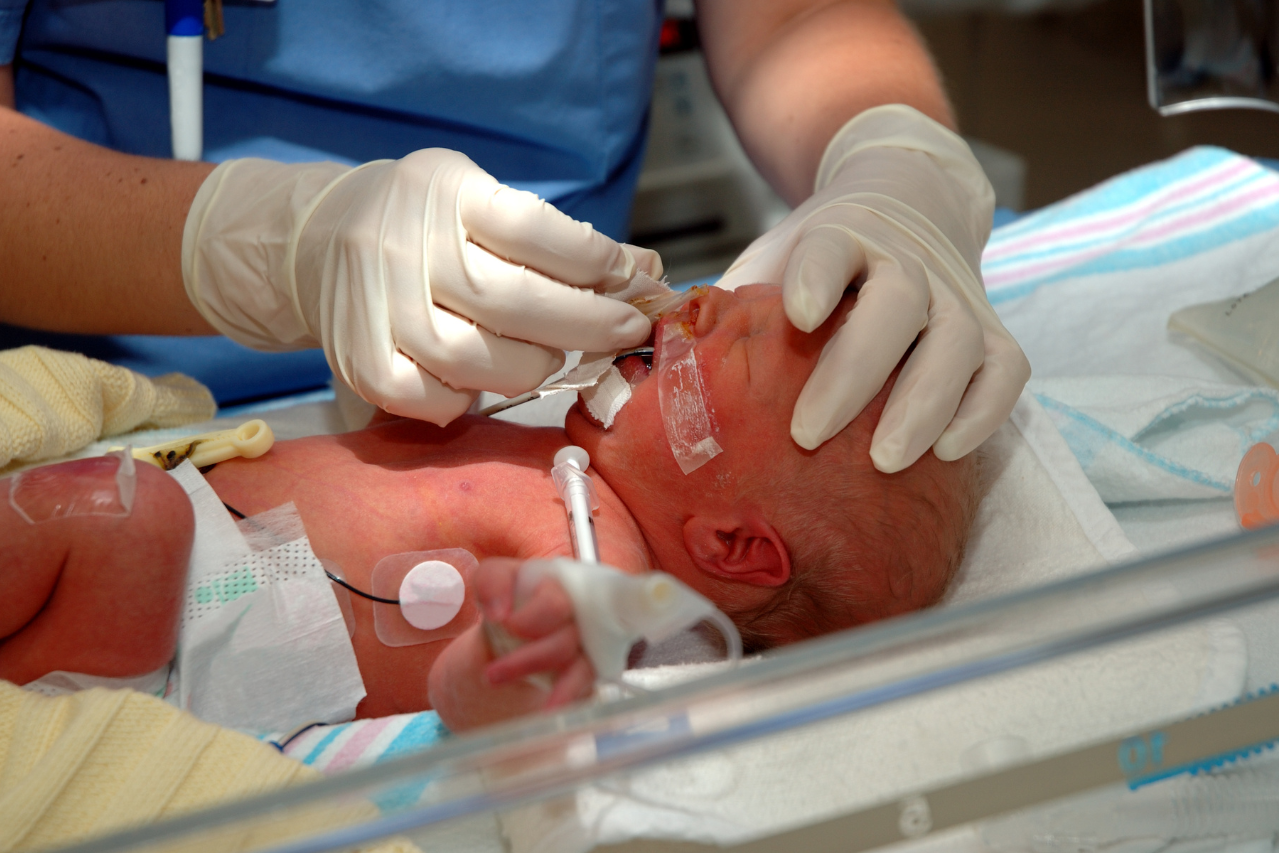The role of artificial intelligence (AI) in healthcare continues to grow, offering promising new tools to improve patient outcomes. In neonatal intensive care units (NICUs), AI is proving to be a game-changer, particularly in caring for preterm infants. Through predictive analytics and early detection technologies, AI is helping healthcare providers intervene earlier, potentially saving lives and preventing long-term complications.
Predictive Analytics for Preterm Infants
Preterm infants, who often face a higher risk of health complications such as respiratory issues, infections, and organ immaturity, benefit significantly from early intervention. AI-powered predictive analytics are now being applied in NICUs to analyze patterns in clinical data, allowing for early detection of potential health risks. Research led by institutions like Stanford University and Boston Children’s Hospital has been at the forefront of developing these models.
In a study published in The Journal of Pediatrics, researchers at Stanford developed an AI model capable of predicting the onset of respiratory distress syndrome (RDS) in preterm infants. By analyzing factors like heart rate variability, oxygen saturation, and patient history, the AI system could forecast RDS hours before symptoms became clinically evident. Early warnings like these provide healthcare teams with the opportunity to initiate interventions, such as respiratory support, reducing the likelihood of long-term complications associated with delayed treatment.
Similarly, a team at Boston Children’s Hospital has pioneered the use of machine learning algorithms to predict necrotizing enterocolitis (NEC), a severe gastrointestinal condition that primarily affects preterm infants. Their predictive model draws on multiple data points, including feeding patterns, vital signs, and lab results, to identify infants at risk for NEC up to 24 hours before typical diagnostic methods would flag the issue. The ability to anticipate such complications is crucial, as early intervention can significantly reduce mortality rates associated with these conditions.
AI in Sepsis Detection
Sepsis, a life-threatening condition caused by the body’s extreme response to infection, is notoriously difficult to diagnose in neonates. Because the symptoms of sepsis in newborns are often subtle, rapid intervention is challenging. However, AI tools are helping healthcare teams identify sepsis before it becomes critical.
A groundbreaking study from the University of Virginia School of Medicine demonstrated how AI could improve the early detection of neonatal sepsis. The study employed an AI system called “CoMET,” which monitored vital signs such as heart rate, respiration, and oxygen levels in neonates. CoMET’s algorithms identified subtle deviations in these metrics, which indicated the potential onset of sepsis hours before clinical symptoms appeared. This allowed clinicians to start antibiotic treatment and other supportive measures much earlier, reducing sepsis-related mortality.
Similarly, research conducted at Cincinnati Children’s Hospital Medical Center has resulted in the development of an AI model that analyzes lab results in conjunction with vital signs to detect early signs of sepsis. This model uses machine learning to assess complex patterns across blood work and biometrics, helping healthcare professionals distinguish between normal fluctuations in a neonate’s condition and the early stages of infection. By using AI to detect these patterns early, healthcare providers can administer lifesaving treatments sooner and prevent severe outcomes.
Real-World Applications and Ongoing Research
Beyond the pioneering research from these institutions, real-world applications of AI in neonatal care are already making a difference in hospitals worldwide. For example, NICUs across the United States and Europe are beginning to adopt AI-driven monitoring systems, thanks to collaborations between academic medical centers and tech companies like IBM and GE Healthcare. These systems continuously track vast amounts of patient data, using machine learning algorithms to predict critical events before they happen.
At the Mayo Clinic, a collaborative project is underway to further refine AI models for use in neonatal care. By gathering data from NICUs around the world, researchers are training AI systems to account for diverse populations of preterm infants, improving the models’ accuracy across various demographics.
While much of this research is still in development, the results are promising. AI’s ability to predict complications such as respiratory distress, NEC, and sepsis before they fully manifest allows medical teams to intervene early, improving survival rates and reducing the severity of long-term health issues.
The Future of AI in Neonatal Care
As AI technology continues to evolve, its integration into neonatal care will only grow. Experts believe that the next wave of innovations will further personalize care, tailoring interventions to the specific needs of each infant based on real-time data. Additionally, AI may eventually help guide treatment plans by predicting how individual patients will respond to specific therapies, ensuring the most effective and least invasive interventions are used.
However, challenges remain. The implementation of AI systems in healthcare comes with concerns about data privacy, integration into existing hospital infrastructure, and the need for ongoing training for healthcare professionals.
1. Data Quality and Standardization
- Research Needs: AI systems rely on high-quality, standardized data to make accurate predictions. However, neonatal care data often varies across institutions in terms of how it is collected, stored, and labeled. More research is needed to develop universal standards for neonatal data collection and ensure that AI models trained in one hospital can generalize to others.
- Safeguards: Establishing protocols for data sharing between institutions while maintaining patient privacy is crucial. Standardized formats for vital signs, lab results, and other key metrics would improve the accuracy and applicability of AI models across different settings.
2. Algorithm Bias and Validation Across Populations
- Research Needs: Current AI models may not always perform equally well across diverse patient populations. Infants from different racial, ethnic, or socioeconomic backgrounds may have varying health profiles that impact the effectiveness of AI predictions. Additional research is needed to validate AI models across diverse populations and ensure they do not introduce or perpetuate bias.
- Safeguards: To mitigate the risk of bias, hospitals should conduct rigorous testing of AI systems in different demographic groups before widespread deployment. Regular audits and updates to algorithms can help ensure fairness and accuracy over time.
3. Integration with Clinical Workflows
- Research Needs: AI tools must seamlessly integrate into existing clinical workflows to avoid overwhelming healthcare providers or introducing inefficiencies. More research is needed to understand how AI can complement human decision-making in the NICU, rather than replacing it, and how these tools can be designed to provide actionable insights without increasing the cognitive load on staff.
- Safeguards: Training programs should be developed to ensure clinicians understand how to interpret AI-generated insights and incorporate them into patient care. Human oversight is critical, so safeguards should include a requirement for clinical validation of AI recommendations before interventions are made.
4. Ethical Considerations and Decision-Making
- Research Needs: AI raises ethical questions about decision-making in critical neonatal care situations. More research is needed to explore the ethical implications of using AI to guide decisions like life-support interventions or when to escalate care in a NICU setting.
- Safeguards: Ethical guidelines must be established to govern how AI is used in neonatal care, ensuring that the technology is used to support—not replace—human judgment. Informed consent processes may need to evolve to ensure parents are aware of how AI is being used in their child’s care.
5. Data Privacy and Security
- Research Needs: As AI relies on large volumes of sensitive health data, protecting patient privacy is a top priority. Research into secure data sharing practices, especially in the context of AI model training across multiple institutions, is needed to minimize risks of data breaches or misuse.
- Safeguards: Strong data governance policies should be put in place, ensuring compliance with regulations such as HIPAA (in the U.S.) and GDPR (in Europe). Additionally, AI models should be designed with anonymization techniques to protect personal information while still enabling the models to function effectively.
6. Monitoring and Continuous Improvement
- Research Needs: AI systems must be continuously monitored to ensure they remain accurate and effective as new data and clinical practices evolve. Research should focus on establishing protocols for real-time monitoring of AI performance and developing adaptive algorithms that improve over time.
- Safeguards: Institutions should implement systems for continuous quality assessment of AI tools, with clear protocols for updating or retraining models as new data becomes available. Transparency in how AI makes decisions can help clinicians trust the systems and identify potential errors.
7. Cost and Accessibility
- Research Needs: While AI has the potential to improve outcomes, cost can be a barrier to implementation, particularly in resource-limited settings. Research is needed to explore cost-effective ways to scale AI technologies in NICUs without sacrificing quality.
- Safeguards: Policymakers should consider creating incentives or funding opportunities to help hospitals, particularly in underserved areas, access AI tools. This could help level the playing field and ensure that AI benefits all neonatal patients, not just those in wealthier healthcare systems.
By addressing these areas through dedicated research and appropriate safeguards, AI in neonatal care can be implemented in a way that maximizes benefits while minimizing risks, ensuring equitable and effective care for all preterm infants.
Source:
NIH (National Institutes of Health) – Research on AI and predictive analytics in neonatal care: AI in Neonatal Care: Current Use and Future Potential in Predictive Analytics Link to study
Nature Medicine – Insights on how AI is transforming neonatal care: AI-Driven Solutions in Neonatal Intensive Care Units (NICUs) Link to article




